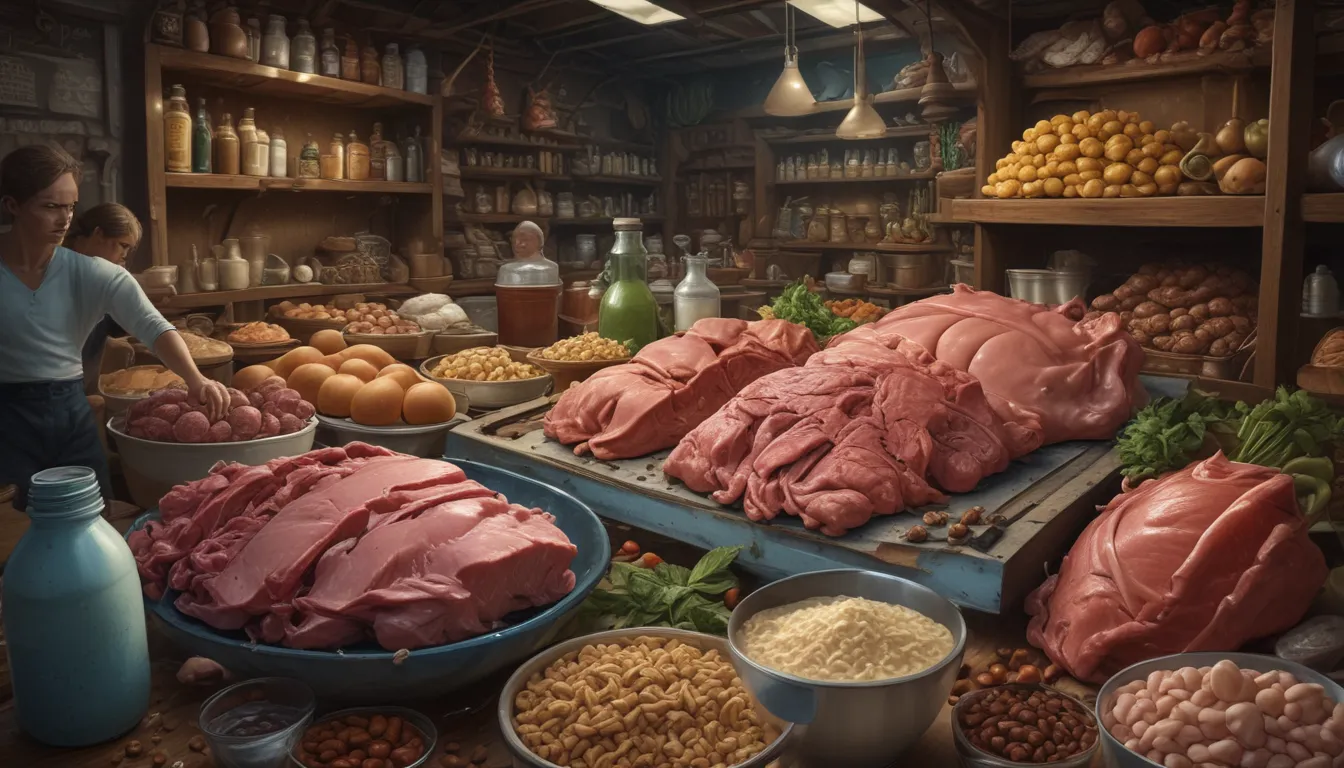A Note About Images: The images used in our articles are for illustration purposes only and may not exactly match the content. They are meant to engage readers, but the text should be relied upon for accurate information.
In the realm of understanding the inner workings of living organisms, protein trafficking and sorting stand as essential processes that ensure cellular function and overall well-being. From the nucleus to the cell membrane, these mechanisms play a vital role in transporting and organizing proteins within cells, allowing them to fulfill their crucial functions. In this enlightening journey through the intricate world of intracellular protein transportation, we will uncover eight intriguing facts about protein trafficking and sorting, shedding light on the fascinating processes that drive cellular functioning.
The Significance of Cellular Protein Trafficking
Protein trafficking, also known as intracellular protein transport, is a meticulous process that guarantees proteins are efficiently transported and delivered to their specific cellular destinations. This process is fundamental for upholding cell function and maintaining cellular homeostasis, emphasizing the crucial role it plays in the overall health of organisms.
The Journey of Proteins from Endoplasmic Reticulum
The endoplasmic reticulum (ER) serves as the primary site of protein synthesis within a cell. Proteins undergo various modifications and folding processes within the ER before embarking on their journey to reach their designated cellular locations, highlighting the intricate nature of protein trafficking.
Unveiling the Signal Hypothesis in Protein Targeting
Proposed by Günter Blobel in 1971, the signal hypothesis provides insight into how proteins are targeted to specific organelles or compartments within cells. This hypothesis suggests that proteins harbor specific targeting signals or sequences that guide them to their destined locations, showcasing the precision involved in protein targeting.
Diverse Mechanisms of Protein Sorting in Cellular Compartments
Protein sorting takes place in various cellular compartments, such as the Golgi apparatus, lysosomes, peroxisomes, and mitochondria, each playing a unique role in sorting and directing proteins to their final destinations. This diversity of mechanisms underscores the complexity of protein sorting within cells.
Embracing Vesicle-Mediated Transport in Protein Trafficking
Vesicle-mediated transport serves as a crucial component of protein trafficking, acting as transport carriers that ferry proteins from one cellular compartment to another. This coordinated process is essential for ensuring the accurate delivery of proteins to their designated destinations within cells.
Role of Molecular Chaperones in Protein Folding and Trafficking
Molecular chaperones, specialized proteins, play a pivotal role in aiding protein folding and trafficking. These chaperones ensure proper folding and transport of proteins to their specific locations, enhancing the efficiency of protein trafficking within cells.
Understanding the Impact of Protein Misfolding on Disease
Protein misfolding can have severe implications and is associated with various diseases, including Alzheimer’s, Parkinson’s, and cystic fibrosis. Disruptions in protein trafficking and sorting can lead to improper folding, resulting in the accumulation of misfolded proteins and the onset of disease, emphasizing the importance of accurate protein trafficking.
Intracellular Signaling Pathways Regulating Protein Trafficking
Intracellular signaling pathways play a vital role in regulating protein trafficking within cells. Processes such as phosphorylation and ubiquitination act as signals that control the transport, sorting, and localization of proteins, highlighting the intricate regulatory mechanisms involved in protein trafficking.
Conclusion: Illuminating the Intricacies of Protein Trafficking and Sorting
Protein trafficking and sorting stand as captivating processes that underpin the proper functioning of cells, directing proteins to their specific destinations and enabling them to carry out essential functions effectively. Through a deeper understanding of these processes, researchers uncover valuable insights into cellular organization, paving the way for innovative diagnostic and therapeutic strategies. By delving into the complexities of protein trafficking and sorting, we gain a deeper understanding of human health and disease, unlocking possibilities for groundbreaking discoveries and advancements in medical research.
Frequently Asked Questions
-
What is protein trafficking?
Protein trafficking is the process by which proteins are transported to their specific destinations within cells, facilitated by sorting signals, transport vesicles, and organelles. -
Why is protein sorting important?
Protein sorting is crucial for cell function, ensuring proteins reach their designated locations to carry out their intended functions effectively. -
How are proteins sorted within cells?
Proteins are sorted within cells through mechanisms such as signal sequences, transport vesicles, and interactions with sorting receptors, guiding them to their respective organelles or the cell surface. -
What are the consequences of faulty protein trafficking?
Faulty protein trafficking can disrupt cellular processes, hinder cellular communication, and contribute to the development of diseases like neurodegenerative disorders and cancer. -
How is protein trafficking studied?
Protein trafficking is studied using techniques like live-cell imaging, genetic approaches, biochemical assays, and electron microscopy, providing insights into the movement and sorting of proteins within cells.
Dive deeper into the fascinating world of cellular logistics and unravel the mysteries of protein trafficking and sorting to unlock new frontiers in understanding cellular function and disease mechanisms. Let the captivating journey through the inner workings of cells inspire further exploration and discovery in the realm of cellular biology.






